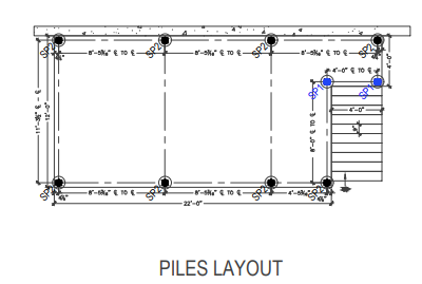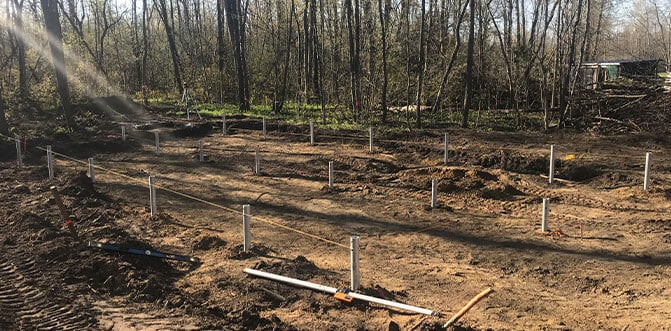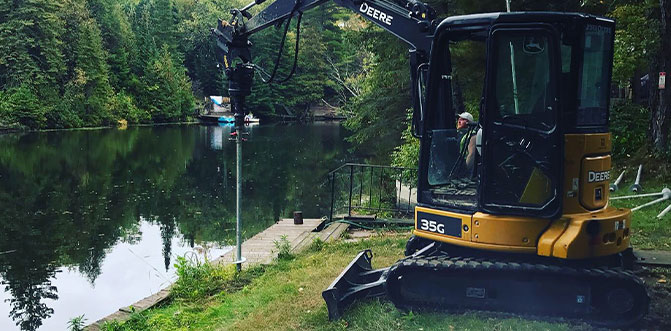Helical piles are large steel shafts that are twisted into deep stable soil conditions to provide maximum structural support.
Helical Piles
The Benefits
Helical pile projects offer a number of benefits including, year-round installation, long life-span and increased load capacities. They are extremely efficient with no soil to remove and no wait time for concrete curing, which ultimately means cost savings. Helical piles offer high-quality construction while adhering to building code guidelines.

Helical Piles
Higher Load Capacity
Build Immediately
Can Be Removed
Year Round Installations
No Soil To Remove
Concrete Footings
Limited
Wait for Concrete
Increased time/labour
Permit restrictions/inspection
Permanent Install
Frost Permitting
Customer Cleanup
Helical Piles
The Process
Design

With over 10 years’ experience, the PFS team has the knowledge to help plan your next project. We work closely with expert engineers in the helical pile industry. Whether we are provided with an idea, a rough sketch, or fully detailed drawings, we can help guide and finalize your design process.
Layout

Placement of helical piles is one of the most important steps of any new foundation construction project. At Power Foundation Systems we work closely with customers and contractors throughout the entire planning phase to ensure that your helical pile project is completed effectively and efficiently.
Installation

While rotating the shaft of the helical pile, torque is applied and transferred down the shaft and to the helix plates. The helix bites into the ground acting like a corkscrew. We monitor the torque and resistance in real-time to ensure suitable soil conditions for the load capacity of each pile and ultimately the foundation for your structure.
Helical Piles
Use Cases
Use Cases
House Additions
Use Cases
Decks
Use Cases
Engineered Concrete Pads/Grade Beams
Use Cases
Hot Tubs
Use Cases
Pole Barns
Use Cases
Gazebo / Sunrooms
Use Cases
Boat House & Docks
Use Cases
Solar Panels
Use Cases
School Structures
Get In Touch
Let the experts at Power Foundation Systems guide you in your next project and help you “start off on the right footing.”

